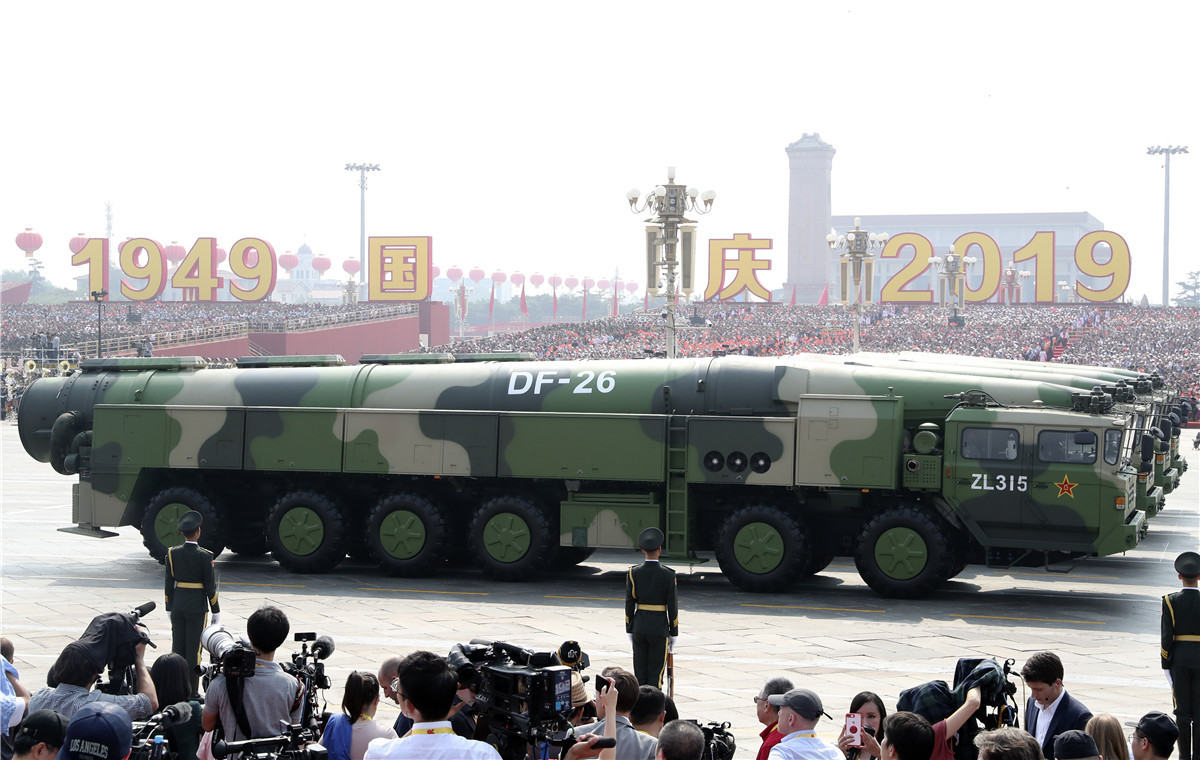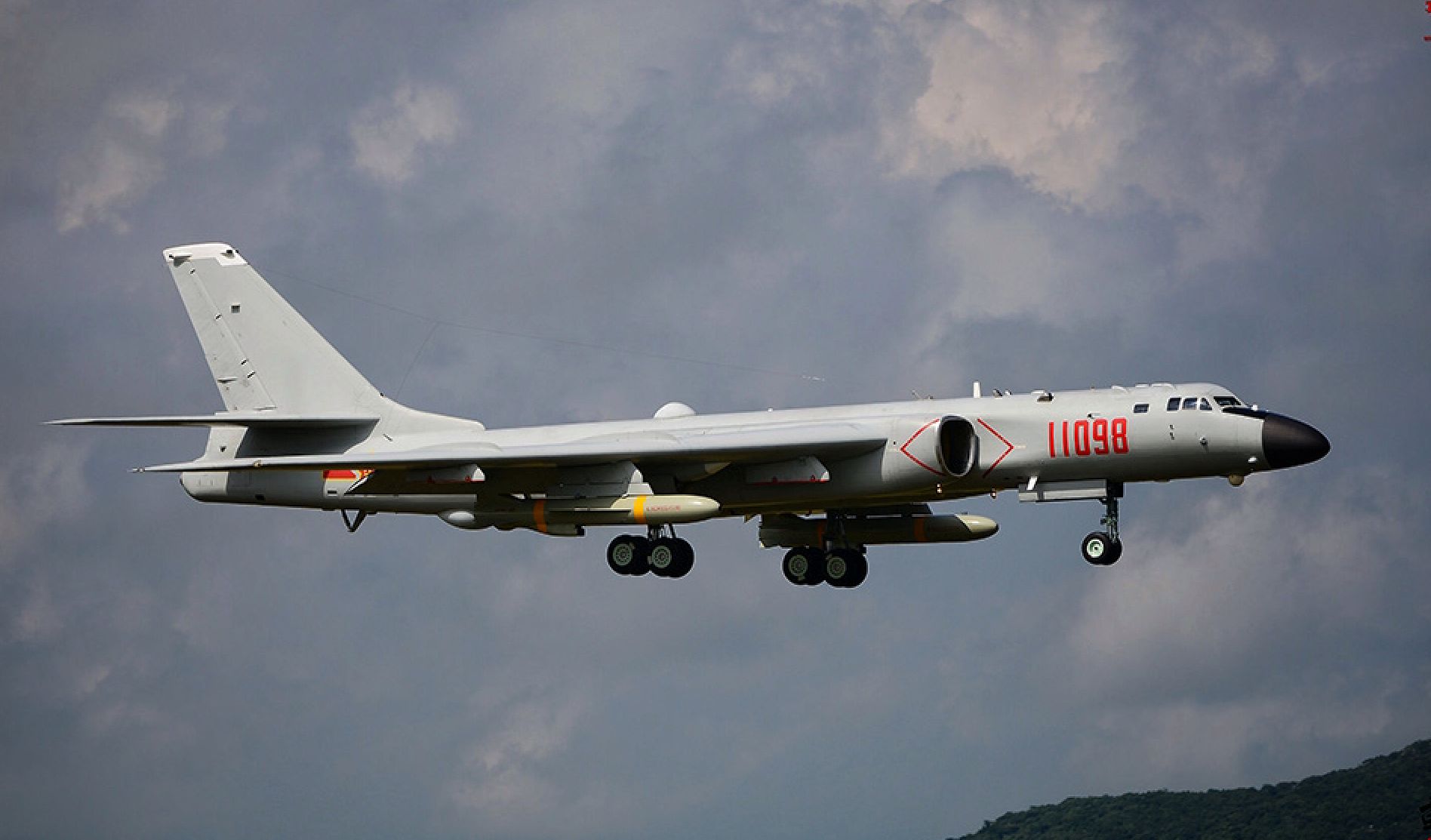Beijing Conducts ‘Largest Nuclear Expansion In Chinese History’ With Aim To Directly Challenge USA: DIA

According to a new US assessment that offers the most comprehensive view of China’s nuclear expansion to date, the country is moving ahead with plans to rapidly modernize and expand its nuclear weapons stockpile on land, at sea, and in the air.
The assessment, “Nuclear Challenges: The Growing Capabilities of Strategic Competitors and Regional Rivals,” is the second volume of the US Defense Intelligence Agency (DIA) ‘s popular unclassified product series. The agency published the first volume in 2018.
China is amassing a fleet of bombers that can carry air-launched ballistic missiles, building a land-based arsenal that includes around 300 missile silos, and expanding its fleet of road-mobile intercontinental ballistic missiles, according to the latest assessment. In addition to this, the country is intensifying work on long-range submarine-launched ballistic missiles.
The report states, “China is undergoing the most rapid expansion and ambitious modernization of its nuclear forces in history — almost certainly driven by an aim for enduring strategic competition with the US.”
Without mincing words, it further adds: “Beijing continues to outfit hundreds of intercontinental ballistic missile (ICBM) silos built to support the largest nuclear expansion in Chinese history.”
Notably, China has been expanding its arsenal at a significantly faster rate than previously predicted. “Beijing has far surpassed earlier growth estimates assessed in 2018 and is currently exceeding 500 deliverable nuclear warheads in its stockpile. By 2030, we estimate that China will have more than 1,000 operational nuclear warheads— most of which will be fielded on systems capable of ranging the continental United States,” states the report. This is a reiteration of the point made by the ‘China Military Power’ report published by the Pentagon in October 2023.
AfriPrime App link: FREE to download...
https://www.amazon.com/Africircle-AfriPrime/dp/B0D2M3F2JT
Moreover, the report predicts that most of this stockpile growth will come from these: Silo-based solid-propellant missile project, likely consisting of about 300 silos; Silo-based liquid-propellant missile expansion; Mobile ICBM expansion; and Theater capabilities expansion.
It is noteworthy that China still possesses considerably fewer nuclear warheads than the US and Russia, even with its rapid arsenal buildup. There are around 3,750 nuclear warheads in the United States’ arsenal, of which about 1,419 are for strategic weapons. On the other hand, Russia possesses a stockpile of 4,489 nuclear warheads and has deployed around 1,550 nuclear weapons, according to the data previously curated by the Federation of American Scientists.

However, the DIA report says that China has neither set an end goal for the number of nuclear weapons it wants to develop nor acknowledged the scale of its expansion. This essentially indicates that there may be a chance that China’s stockpile of nuclear warheads could overtake that of the US and Russia. However, currently, there is no evidence of that.
According to the report, China has developed a host of nuclear-delivery platforms, including Air-Launched Ballistic Missile (ALBM), Hypersonic Glide Vehicles (HGVs), Intercontinental Ballistic Missiles (ICBMs), Intermediate-Range Ballistic Missiles (IRBMs), Medium-Ranged Ballistic Missiles (MRBMs), and Submarine-Launched Ballistic Missiles (SLBMs).
Hospital Management Platform SaaS.. Hospital and Patients management system perfect for all medicals.
Partnership/Agent Needed. Earn As You Go on monthly basis.
Contact Admin: admin@healthdata101.com
+++++++++++++++++++++++++++++++++++++++++++++++++++++
Furthermore, even though the report acknowledges China’s nuclear strategy of ‘no first use,’ it adds: “China’s nuclear strategy probably includes consideration of a nuclear strike in response to a non-nuclear attack threatening the viability of China’s nuclear forces or C2, or that approximates the strategic effects of a nuclear strike, despite the NFU policy.”
Not just that, the report also goes so far as to say that Beijing would likely also contemplate the use of its nuclear arsenal should a conventional military defeat in Taiwan pose a serious threat to the regime’s existence.
This prediction comes even as analysts have warned that a Chinese invasion of Taiwan could escalate into a regionwide conflict, ultimately resulting in a direct armed confrontation between China and the United States.
China’s Expanding Nuclear Arsenal
The DIA report calls out China’s reticence in acknowledging the incredible growth in its nuclear arsenal despite compelling evidence that suggests otherwise. For instance, it recalls how the Chinese Foreign Ministry said: “On the 2022 assertions made by U.S. officials that China is expanding dramatically its nuclear capabilities, first, let me say that this is untrue.”
In 2019, China unveiled its ‘triad’ at the National Day Parade. Just two years later, in 2021, satellite imagery suggested that China was constructing three missile silo fields in northwestern China. The expansion, along with the rhetoric of the Chinese Communist Party (CCP), points toward a dedicated effort at significantly increasing nuclear weapons for strategic deterrence against Washington.
The report further says that China’s expansion of its nuclear arsenal is an attempt to “counterbalance—directly counter or strategically obviate—assessed US military advantages.”
It also details China’s recently fielded capabilities and modernization. For instance, it highlights that China has developed an air leg of a newly established triad consisting of PLA air, sea, and land forces, using the H-6N bomber, which can carry a nuclear-capable air-launched ballistic missile and refuel from the air. This bomber, it notes, was on public display in China at the 2019 National Day parade.

The report also frequently mentions the DF-26 Intermediate Range Ballistic Missile (IRBM), which is China’s first precision-strike nuclear capability.
According to the DIA, China “probably also seeks lower-yield nuclear warhead capabilities” for regional use to threaten American soldiers and allies, with the majority of the expanding arsenal consisting of warheads that could strike the continental United States. According to the report, Beijing is doing this by expanding its arsenal of “theater-range” delivery systems, including the DF-26 intermediate-range ballistic missile.
The report further notes that China fielded two more Type 094 JIN-class submarines for six SSBNs—providing enough capability for continuous peacetime deterrence patrols.
Additionally, China has improved upon the JL-2 SLBM by fielding the more capable and longer-range JL-3, allowing China to reach the continental US from protected bastion areas such as the South China Sea.
The report then mentions two missiles that have recently been fielded: the DF-31 class transporter-erector-launcher (TEL)-based road-mobile ICBM and the DF-41, China’s first road-mobile ICBM with MIRV capability.
“This system likely is intended to carry no more than three warheads per missile and has improved range and accuracy over DF-31 class ICBMs,” it emphasized referring to the DF-41.

Intriguingly, the DIA report comes less than a month after China test-fired an ICBM in the Pacific after a hiatus of almost four decades.
Besides detailing its existing capability, the DIA report makes predictions on future Chinese nuclear capabilities.
“China almost certainly plans to continue substantial upgrades to all three legs of its nuclear triad, including upgrades to existing weapons classes such as single and multiple warhead versions of the DF-5 liquid-propellant ICBM; a new SSBN class probably intended to field MIRV SLBMs; and a strategic stealth bomber,” it stated.
In addition to highlighting the challenges posed by China’s expanding nuclear arsenal, the DIA also illustrates the evolving nuclear threat from Russia, North Korea, and Iran. For instance, it says: “Since Russia expanded its war on Ukraine in February 2022, Russian leaders have employed rhetoric evoking Russian nuclear weapon capabilities to influence Western action.” Intriguingly, this report comes after Putin decided to alter the nuclear doctrine.
On North Korea, the report states that posing a threat to the United States and its regional allies, North Korean forces continue to be active, conducting training exercises to load and launch nuclear bombs. In 2022, they conducted more than 150 missile launches.
The DIA report announced that Iran does not have nuclear weapons. However, it adds that “Tehran continues to stockpile enriched uranium far in excess of the Joint Comprehensive Plan of Action (JCPOA) limits— shortening the time that Tehran would require to produce sufficient weapons-grade uranium for a single nuclear device, should Tehran decide to do so.”
Having said that, of all the nuclear states of interest, the report appears to be taking the most stern tone with China, which has emerged as the primary adversary of the United States.
“Beijing’s pursuit of enhanced nuclear deterrence over the next decade probably will increase leadership confidence—and the risk of miscalculation—as the PLA makes gradual improvements in its ability to signal and counter the U.S.,” it emphasizes.
The report is likely to become another thorn in the already unsavory relationship between the two countries. China has criticized the US for peddling false narratives about the Chinese nuclear arsenal to thwart its development of nuclear weapons.
AfriPrime App link: FREE to download...
- Questions and Answers
- Opinion
- Story/Motivational/Inspiring
- Technology
- Art
- Causes
- Crafts
- Dance
- Drinks
- Film/Movie
- Fitness
- Food
- Игры
- Gardening
- Health
- Главная
- Literature
- Music
- Networking
- Другое
- Party
- Religion
- Shopping
- Sports
- Theater
- Wellness
- News
- Culture
- War machines and policy

